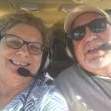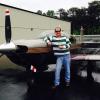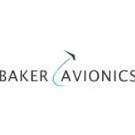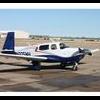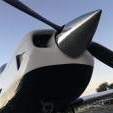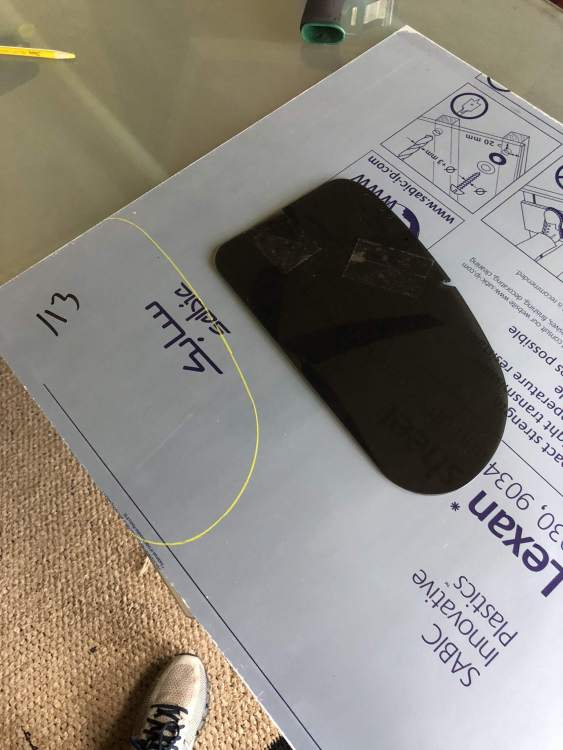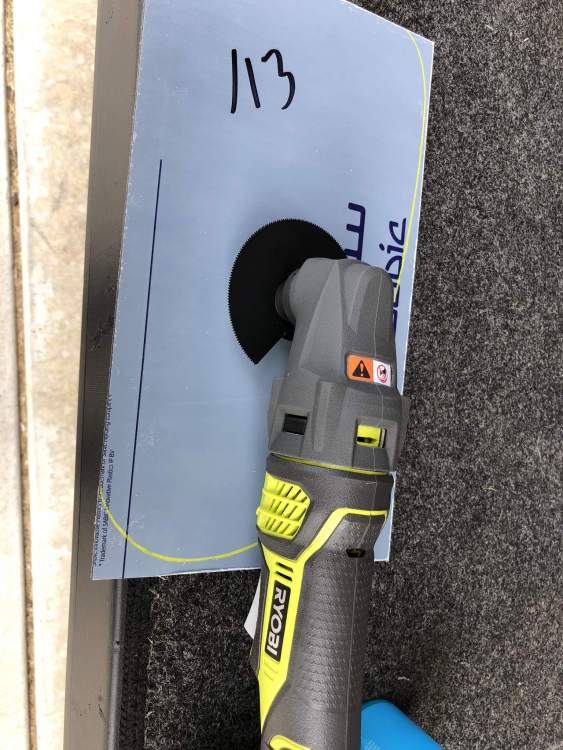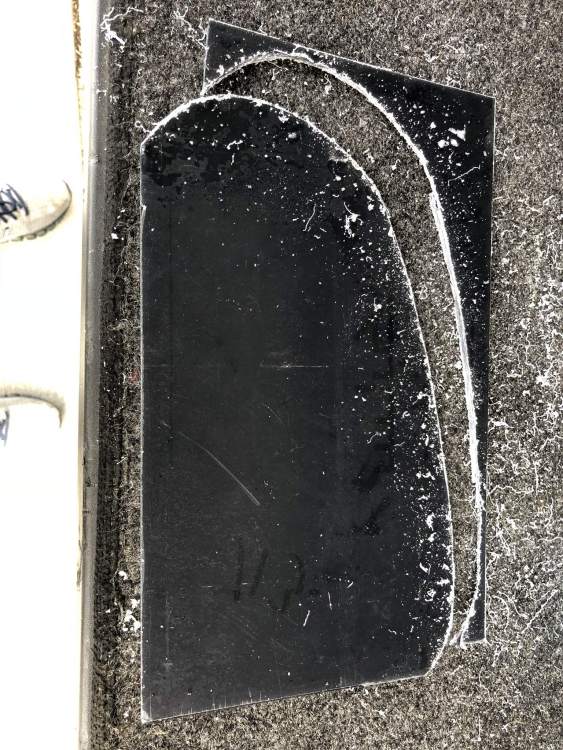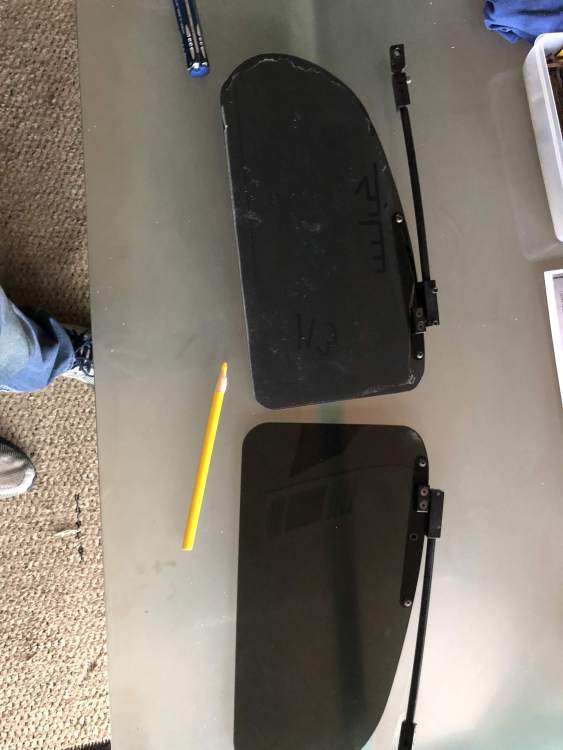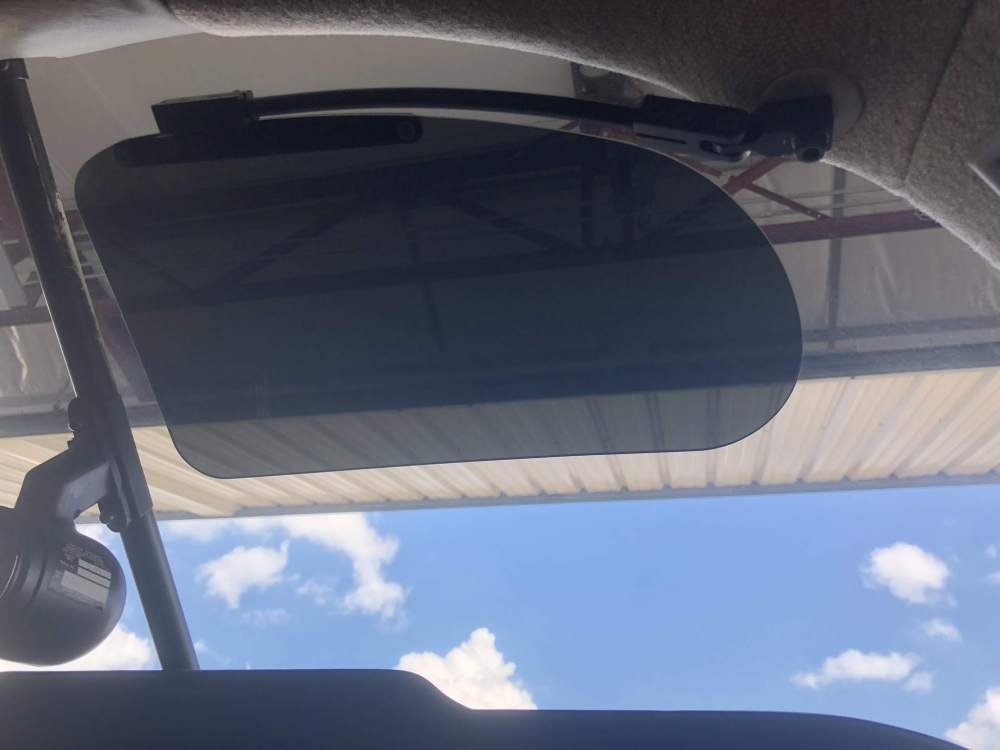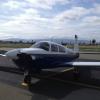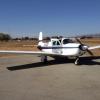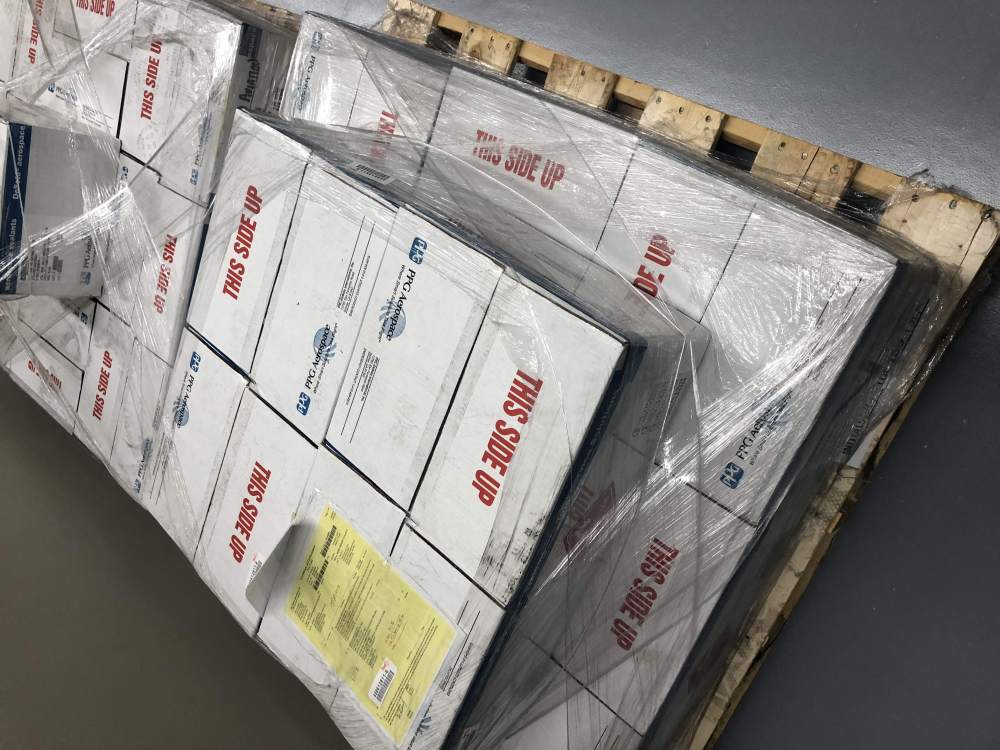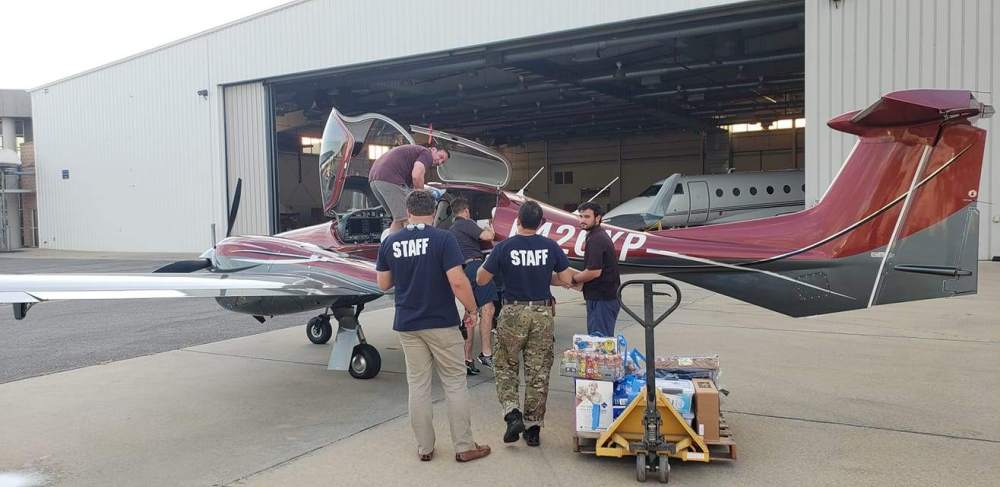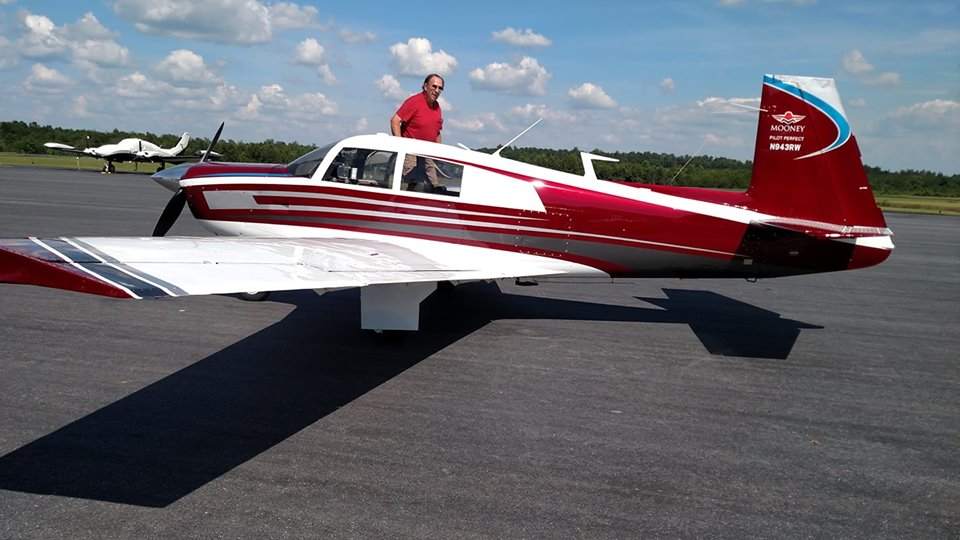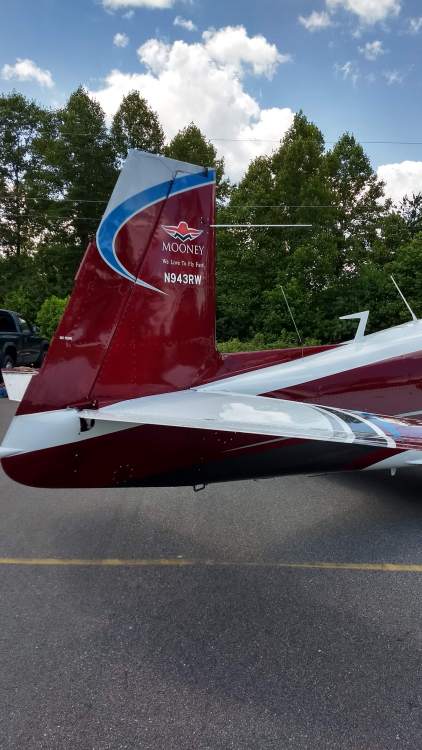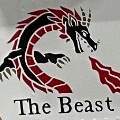Leaderboard
Popular Content
Showing content with the highest reputation on 10/19/2018 in all areas
-
And I thought I worked a lot of hours! I can safely say that it is extremely unlikely that you will ever have another problem from your audio panel. The probabilities of having two bad experiences with any of our audio panels is next to zero. I don't want to come across boastful, but rather, confident from the data that our repair station gives me. In fact, I'm very proud to see our repairman (1) working on production rather than repairs. There are 5 shelves labeled Monday, Tuesday...Friday, it is not unusual at all to see all 5 empty. The fact that we have been producing intercoms and audio panels for 33 years and knowing the number of units that are out in the field makes me so proud what this little company can do. Maytag definitely had the right idea. (So did Hewlett Packard, you design in quality) But when there is a problem, that's when you find out just how good (or bad) the company is. Thanks for being our customer.5 points
-
Guys, I’ve made a couple of minor updates to the XL sheet - fixed an error in the off chart ROP MP calc and added QNH in inches for you guys on that side of the big pond. I have been looking at the easiest way to get the info onto a mobile device in a usable form. It was going to take a long time to write, or have written, a native app but I’ve found a clever site from our German friends that allows you to port an XL sheet as an app “wrapped” in their App. Try this link. https://oaa.app.link/Wbv8GfTJ6Q Should work. Haven’t checked but understand it works on Android as well. The first time you click it will ask you to install the OpenAsApp app. Then it should give you an option to open the sheet. Let me know your thoughts and any bugs. Should work well for those quick “how much fuel can I load “ calcs as well as landing/take off distances. Fits on my iphone SE screen so should be better on larger ones. Sorry no charts. Once you have input your own values including BEW and arm use the menu accessed from the top right to save for future. You'll want to change the BEW - ours has AC and Oxy! All sheets take values from the loading on the W&B page unless you input an alternative fuel load, or weight. Apologies but you guys will still have to input load weights in metric. Might do an imperial version if enough are keen. If you are running ROP input values into the LOP page - they are carried to the ROP page. As before happy for any suggestions, or bugs. For the app any changes I make are "pushed". Happy to cut a version for other aircraft now that I have it set up - just need some clean charts, and some time. PatrickF M20R_WandB_PerformanceCharts_rev2.2.xlsx4 points
-
3 points
-
I'll just toss this in here, as it might help others going through engine replacement or planning thereof Factory reman, installed in May this year, running in ok, but started to drip oil after about 25 hours. Cause: The cylinder head drain tubes, where the aluminium tubes goes into the rubber tube on the sump were insufficiently tightened. Cure: Tighten the hose clips More leaks after 40 hours or so. Cause: Cylinder head oil injector to cylinder head. Cure: the injectors all took nearly a flat (1/6 turn) to nip them up again Suggestion: a) Before installing the engine, arrange hose clips on cylinder drains to give best possible access after installation and verify tension b) Check cylinder head oil injector torque at installation, and re-check at subsequent oil changes until stable2 points
-
I've got a hard time imagining you could balance at two different RPM's. Not an A&P, but the guy who did the balancing just wanted one RPM. In terms of plugs, people seem to prefer Tempest over Champion by reputation. People seem to think fine-wire plugs are worth it, but it's a cost/benefit problem. If you have plugs bad enough to affect ignition, that should have been apparent on either the runup or an in-flight mag check with a 4-cylinder engine monitor. Not clear if you have an engine monitor.2 points
-
2 points
-
My airplane has 3895 hours on it. It was on its 2nd engine before the shop mishap a couple of weeks ago. Shortly, it will be on its 3rd engine. The turbo on the first one lasted about 1300 hours before I began hearing hissing noises. Somehow the blades got chipped. It was overhauled. Awhile later the waste gate needed to be overhauled. On the 2nd engine, I proactively overhauled the turbo, waste gate, and controllers at about 1300 hours again. The controllers never controlled properly on descent. So, from experience, I would overhaul all turbo components including waste gate and controllers at half TBO at a time of your choosing rather than having to do it at some out of the way place at a time NOT of your choosing.2 points
-
I have the G500 TXi, and vouch for its worth. There is absolutely no comparison between it and a couple of Aspens. If you're NOT going to get the GFC 500 when it becomes available late this year or early next year for the Mooney, then I recommend that you get the GCU 485, unless you like the PFD on the right side and the MFD on the left. Reaching over with your right hand to set GPSS, ALT, and V/S is clumsy. I've changed my screen to right PFD and left MFD but didn't like it, so reversed it again. I wish I had purchased the GCU 485, and would change my panel once again to add it were I not considering adding the GFC 500 next year which essentially would take the place of the GCU 485. If you add the GCU 485, place it in a comfortable position for control with your right hand.2 points
-
2 points
-
2 points
-
2 points
-
Bought my '84 J in 2013 for $91,000 and have had annuals in the $2,000-$2,750 range since. Dropped a bunch of funds in the panel this spring, overhauled the mag a couple years ago, and spend whatever is needed to keep it airworthy, safe, and enjoyable. Currently working on refreshing the interior and plan to have a paint job in the next few years. I could probably look up all the numbers and add them up, but I am fortunate enough not to have to watch every penny since the kids are gone (for a while now) and the retirement is fully funded. Most of the other hobbies have been abandoned or are being done in conjunction with flying the plane. When the plane is sold, I will not care about the price because I will either be dead or no longer capable of competently flying it. Either way, won't matter to me.2 points
-
Ok. So it gets worse before it gets better I suppose? I get some solid vectors from approach to help me while shooting an LPV approach (can't recall the airport) down to DA, but I don't break out. As I call missed my wife says , "I can see the airport below us!" While climbing out I look down and I too got a glimpse, but I was not in a position to land and the plane was still flying so I chose not to make any abrupt or irrational decisions. I continue my climb out trying to call missed to approach, after some helpful retrans from another aircraft I gain enough altitude to make contact. After 10 mins of approach calling out 2-3 different airports with weather no better than OC at 400' and me turning to 2-3 different airports as they give me new vectors I look over and see that the generator is picking up the 5-10 amp load of my avionics now. I tell approach I need to head east to better weather 1000' or better. This resulted in flying at ~3500' for another 30 mins to start the RNAV approach into KEXX all still IMC. That gave me time flying straight and level to test that my autopilot was still working so I engaged it and took a breather sorta speak to set myself up for the next approach. I got passed off twice to new controller, but they were all very helpful and told me to limit my transmissions along my flight to conserve power. Obviously I broke out and landed without issue, so far the Family owned FBO/Service personnel at KEXX have been very accommodating and helpful. I called and let ATC know I was down and safe at KEXX and also submitted a NASA report. On the drive up to Virginia I called AOPA using their legal services to see if there is anything else I need to do. Other than the steps I already took he recommended not moving the aircraft until a mechanic has looked at it and puts something in the log book even if it’s “could not duplicate”. Today they were able to get to troubleshooting and told me they ran it up a few times and indeed the generator is failing, as they increased RPM the Voltage would drop off. They are working quotes and options for me now, so far from reading on the forum; other than some weight savings I don't see any reason to go the more expensive route and convert to an alternator. They should end up ordering an overhauled generator and installing it, after which I will have them trouble shoot the G2 OAT probe as it showed 110F during landing when the outside temp was ~70F (maybe the failing generator somehow caused this?) and also my HSI Gyro or slave function that seems to lag and give me erroneous readings. (This has been somewhat ongoing, do I opted for the G5?) Sorry for the long post and poor grammar. Jon.2 points
-
gsxrpilot's map is pretty neat because it shows the locations of those folks on Mooneyspace. Alternatively, the link below shows the (registered) location of all Mooney aircraft. The database is straight from the FAA's aircraft public registry https://www.faa.gov/licenses_certificates/aircraft_certification/aircraft_registry/releasable_aircraft_download/ extracted and put into a google map. I tried to color coordinate based on aircraft model as best I could. Mooney Map Link ----- https://goo.gl/mMS65x2 points
-
Update 16th June 2022 Guys, a quick edit to add links to some new sheets for the M20U and the M20K as well as App links for all. Our good German friends at OpenAsApp have been knd enough to give me a professional subscription so I have access to more published Apps. I'm not sure how long it will last after the year but I'll publish these while it does. Update 14th March 2022 Guys, a message from someone on this forum chasing an open copy of my XL sheet has prompted me to issue new versions for M20R, M20R with 310HP STC and M20J which I completed about a year back. I was hoping to add more models but hit a snag with our German OpenAsApp friends changing their model so that I could now only publish 1 App on the free membership. I have been pushing for them to reconsider but without luck. Luckily I still have access to the 3 I'd already published so can cheat a bit and reuse them. I do hope to do more models and if I do I will add here. Links to the tools: M20J XL https://bit.ly/M20J_XLS App https://bit.ly/M20J_OasA M20K XL https://bit.ly/M20K_XLS_Pub App https://bit.ly/M20K_OasA M20R XL https://bit.ly/M20R_XLS App https://bit.ly/M20R_OasA M20R310 XL https://bit.ly/M20R310_XLS App https://bit.ly/M20R310_OasA M20U XL https://bit.ly/M20U_XLS App https://bit.ly/M20U_OasA I am using bitly links so I can keep track of what is happening and easily update in future. Depending on how your system is set up the link will take you to the location in your browser. You can then use the Open button to open in excel, or may have to use the Dropbox options (little arrow top left) to go back to Public folder and download from there. If you do use the App version I would suggest that you also download the associated XL sheet so you understand the source data for details and limitations. Quick Usage guide XL sheet Quick Video on how to use spreadsheet: https://bit.ly/XL_howto Base Information - Update the base information sheet to match numbers for your aircraft. Save a base copy. W&B - fill info into green cells. Weights and fuel load are carried forward to other sheets but can be changed on those sheets. Work sheet_takeoff - Fill in new weight if you need to, and remaining values in green cells Takeoff Table - use to generate a takeoff table. Read the instructions on the page. If you need to reformat copy the resulting table to word or similar and paste as a table then format. Work sheet_landing - similar to takeoff but you will probably want to change the weight to your expected landing weight. Landing Table - similar to Takeoff table Speed Range Endurance - limited depending on model. M20R is fairly comprehensive, even if of limited use. OpenAsApp Great software and very responsive team that have taken on a number of my suggestions. Currently a dead option as the latest pricing has limited free published Apps to 1, and the first tier of paid access is around $90 a month ! I am still pursuing. The first time you click the link it will ask you to install the OpenAsApp app. Then it should give you an option to open the sheet. Let me know your thoughts and any bugs. Works well for those quick “how much fuel can I load “ calcs as well as landing/take off distances. Fits on my iphone SE screen so should be better on larger ones. Once you have input your own values including BEW and arm use the menu accessed from the top right to save for future. You'll want to change the BEW - ours has AC and Oxy! All sheets take values from the loading on the W&B page unless you input an alternative fuel load, or weight. Apologies but you guys will still have to input load weights in metric. If you are running ROP input values into the LOP page - they are carried to the ROP page. As before happy for any suggestions, or bugs. For the app any changes I make are "pushed". THE LONG VERSION (boring bits) History I originally did this as a labour of love to allow easier use of POH charts. Owning the plane made the effort worthwhile. The spreadsheet was built "organically" so some of the calculations and methods are a bit quirky. Purpose The tools are specifically NOT to replace any of the clever Apps out there - just to allow easier use of the original POH data. How I use it: I use the app version for our plane (M20R VH OVH) to check weight and balance, particularly for "full fuel load" if I'm on a long trip. Also handy when you are filling a US gallons plane with liters here in Aus. I use the landing performance page mainly to double check my approach ref speed for the weight and I'll also double check the take off and landing performance and distances if I'm heading somewhere I don't know well, or I know is "tight". Development update (for the geeks) I now use tables for power settings rather than the generated formulas I used before. The Table is in a hidden sheet: "Z_Power Table ..." Newer versions of the XL sheet don't include detailed performance charts as they have limited use and are a pain to generate. In any case if you are like me you get a couple of settings from the book, rework them for real life and rarely go back to the book except if you need a particular setting for a different profile. The older model POHs have tables which are easier to look up if you are really keen. I did the exercise originally for the M20R just to see if it could be done and I very occasionally have a play around with power settings and range - mainly to remind myself why we bought a Mooney, and how much further it can fly past where I need the loo! Addition of generated tables for landing/takeoff - thanks to a suggestion from @midlifeflyer I have added tables for takeoff/landing as well as the original charts. Tables have been left as unprotected sheets or they won't work so take care not to corrupt, or take a copy before you do. The tables are set up as a pivot tables with some tricky data table generation as the source. If you want to reformat the look just highlight and copy & paste to a blank worksheet or other document once you have the info you want. I am now developing all the XL sheets off a common base to save time and reduce errors. It also makes Apps for new models and the updates to the Apps much easier as the same value always hits the same cell across the models. One of the side effects of this is that the newer sheets aren't as "pretty" as the original. In some cases there are unused cells etc. Note the errors made using the graphical method in some of the Mooney base examples - they had fat fingers as well! My graphics are for confirmation only. Values are calculated off formulas digitised from the original chart. Some error but very minimal. (for the real geeks) Workings are in hidden cells generally to the RHS of displayed info, or in hidden sheets. To unprotect sheets - Password YCAB (our home strip) M20J notes Have spot checked against POH 1221 - ISSUED 11-15-77 which has tables rather than charts for TO and LNG at max weight. Values align reasonably well but table values generally LESS conservative for 50 foot distances. You can use the Table sheets in the XL to generate a table equivalent to the one in the old POHs but including varying weights. Have changed the MP value in the power table for 8000/75%/2700 as the value in the published table appears to be an error. (highlighted) Disclaimer I have added POH details and variant as a check against source data These are tools for info only. No liability accepted. I enjoy this but it takes time. Support is very little and sporadic! Thanks to all the members who have provide feedback via the forums and PMs. Special thanks to @Deb and DaveD who did a heap of QA on th XL and App versions. Posted October 13, 2018 I've uploaded this in case anyone else wants to use them. Think they are good for all the M20Rs I generally use an EFB on the Ipad for planning but occasionally go back to the POH for a check, or on review flights when I hit an instructor who insists on "old school". I also find the electronic ones I use don't handle take off and landing distances well either and for longer flights I like to print out all the calcs to cover me legally. I've always found this form of chart a pain by hand. I've been meaning to do this for a while but recently becoming a part owner in a GX2 Ovation meant the effort was worthwhile. Let me know if you find any bugs - I'm sure there's still a couple. If you want to see the calcs behind the numbers unhide the columns to the RHS of the charts. In all cases I've plotted on the POH charts as a cross check. The password is the home of our plane "YCAB" - Caboolture, Australia. PatrickF >>>>>>>>>>>>>>>>>>>>>>>>> Guys have had a couple,of people download the old version. Refer my next post below for updated and App. Next time I’ll do it right and modify this one.1 point
-
After having the prop overhauled it seemed reasonable to do a dynamic balance. This is a first for me. I was the assistant only and my AME is using the equipment for the first time. We had quite a time of it. Often getting close to the .06 ips. But when the rpm was raised to cruise speed the whole thing went off the rails i.e. not balanced at all. To make a long story short; we pulled, cleaned and tested the plugs. That was a real eye opener. Six of the eight plugs gave up on us once the pressure neared 80 psi. Some far before that pressure. Needless to say I replaced the plugs and we managed to balance to .01 ips. So here's the thing for me; The plugs were replaced August of 2015. The is less than 200 hours on the plugs. Probably quite a bit less. Never having done dynamic balancing before, it seems like such a good diagnostic beyond obtaining a smooth running machine.1 point
-
I don’t think anyone is suggesting you buy one of these so you can become a child of the magenta line and a king at AP button pushing. I hand flew for 10 years, 7 of those in my Mooney with a freshly stamped IFR ticket in my pocket. I still remember the anxious feeling I would get when I would hear those words “I’ve got a lengthy re-route for you, advise when ready to copy”. Sure I did it manually, but it didn’t mean I liked it. Not to mention after a long hand flown flight in the soup how poorly I performed due to the fatigue. An autopilot like you suggest is just another tool to be incorporated into your flying. Ironically on the 6 month IPCs I do, the instructor I use won’t even let me fly a coupled approach. When I practice with a safety pilot, I will mix in coupled approaches or just fly them by myself visually with the AP coupled just so I do stay current on flying them coupled. Like I did in the video I posted. It doesn’t mean the world works this way. I have flown with pilots who are addicted to their autopilots. So much in fact, I have asked why are they asking me to be their safety pilot when it’s clear they’re letting George do all the work. Those are the ones who I worry for. Sent from my iPhone using Tapatalk Pro1 point
-
1 point
-
Chris as someone who was looking at J's in particular, I don't think you'll find what you are looking for for less than 125k. Mine was slightly less than that with GNS 430W and no ADS-B they had a plane that would fit your bill but it was 129k with high time engine. Great avionics though. Good luck, it's a great platform.1 point
-
1 point
-
1 point
-
I did this last month and also found out that many of their aircraft have come through their doors previously. I think it was the fourth time they sold the plane they sold me. That says a lot about their purchasing and selling character. Most of the planes they are selling are coming from buyers moving up. One other thing they do for you that helped me tremendously as a buyer; you can get on a mailing list and they let you know ahead of time what they will have coming in soon. I got one of these and it all started with, "I'm interested in this one..."1 point
-
If he is good at what he does that sounds reasonable for all the services which are included1 point
-
Mark, glad to see you here checking this out! We need to catch up!!! Lets talk soon!!!1 point
-
Dear MJMak Holy smokes, I just found this thread. Fortunately our warranty exchange program is on autopilot. Now the question is, how is replacement unit working? Sorry for the hassle. Mark1 point
-
I agree. I bought my first plane while I was still a student pilot. I had been flying airplanes belonging to my local flying club, and the club went bankrupt just as I was getting ready for my PP checkride. Bummer. I decided renting would be a good option until I did the math... and a friend had a 172XP for sale at a decent price so I snapped it up. I flew it 100+ hours/year for 2 years, and in the process determined what my airplane mission would be. Buying a "starter" airplane (for lack of a better term) makes a lot of sense. It doesn't cost that much to get into ownership, and if you are reasonably careful, you can sell for it in a year or two for about what you paid to get into it. By having your OWN airplane to fly whenever you can or want, you will figure out if you truly do fly enough to justify ownership. I know guys who bought their first airplane and realized after 3 or 4 years that they simply aren't active in aviation to the point of justifying the expense. That is a relatively cheap lesson if you buy a Cherokee or 172, but it's tougher to justify if you are spending $150+ thousand dollars. I don't believe anyone should buy an airplane with a definite time-frame in mind. An 8-year investment makes no sense for folks that are just starting out in general aviation.1 point
-
Perhaps I’m the only one here, but I think Mooneys are built to too high a standard to be compared to a British vehicle. The Porsche has always made the most sense to me. Seating position low to the floor and relatively narrow in the cabin. Built around business (going fast) and quality.1 point
-
I used to liken Mooney's to Porsche's. I've never been in a Porsche but ever since I got the Mustang they are very similar. Bend down to get in. The seat grips you. Low sitting. Feet straight out. Big metal moving bar in the middle when you wanna go fast. Zero legroom in the back. Looks fast just sitting still. And last but not least- everytime you stop, the guy in the Corolla (Cessna) stares at you in resentment1 point
-
My doc said he couldn't do it, no equipment to test vision or hearing. AOPA kindly forwarded the hearing section from the AME Guide, and I volunteered to fetch a report from my eye doctor. Still no go, he has no way to test hearing, apparently unable to discern that facing away from me and speaking in a soft voice is an effective test . . . . So I got the AOPA Basic Med package back from him (16 page color PowerPoint printout) and stopped in at the local urgent care on the way home yesterday. They had no problem other than it being closing time, so I went back this morning and knocked it out. Lots of time waiting in Exam Room 3, but was out in about an hour for $60. It was almost 5 miles from work versus at least 40 to the nearest AME, half the price and lasts twice as long. Win win! Now I have two weeks to take the online course and print out my certificate, at which point it goes "in my logbook" instead of in the plane with me. Retake the online course every two years, hit Urgent Care every four. I lose the ability to fly planes more than twice the weight of my C that carry way more people, and can no longer strap on an oxygen tank and search for my service ceiling. Then again, I've had my C to 15,000 msl on a hot August day and later calculated that DA was 18,800 and don't really care to go there again . . . .1 point
-
Wanted to share a little build on a part that I did on my M20K. About a week or two ago, while manipulating the pilot side visor, the lens broke. I looked around and found the lenses at LASAR for about $175 - $250 for a single lens. Not knowing the exact part number I decided to try to make my own. I think the stock ones are made of acrylic as they tend to fracture pretty easy after playing with the stock broken lens. I decided to purchase some stock Lexan, Dark Tint from eBay. Using a grease pencil, I outlined the broken piece taped back together. From there, I used a multi-tool with a Half-Moon Blade blade to slowly etch the shape close to the final shape and used a small belt sander to finalize the shape. I then used a step drill bit to make holes for the bracket and done! I have a nice lens like new for under $30.1 point
-
1 point
-
The oddity of the TC... They can appear healthy and operate normally for decades... But... As they wear? They start to get really jumpy in turbulence... so jumpy they would be hard to follow if that is all you have to keep the wings level... so... next time you fly in the bumps... check that TC... See if it’s worthy... PP experience I got training for the IR in north Jersey... cold winter bumps in the dark over bumpy terrain... in a C172... odd things one does when between Mooneys.... Best regards, -a-1 point
-
Well, yes, but....... As your battery ages, the capacity drops. So it does with cold temps and inadequate electrolyte. Worse case scenario, you could have a battery that has 25-50% capacity, but it would still work fine starting the motor and you would be none the wiser. And in the situation you were in, it's not like you'd know how much battery you had left or when it would quit. So yes, I think "30 minutes on the battery" is a pretty good policy in that situation...1 point
-
Could be that the scavenger pump is not scavenging enough. I had this with my K. There is a test for that which can be done. As I understand it turbo oil leakage is not really a seal issue but instead a scavenger pump or check valve issue.1 point
-
That’s not the case all the time. I was there and didn’t have a problem with traffic. They do most of the construction in the middle of the night. My house is a stones throw away from KVGT and I was at the craps table at the MGM Park in 20 minutes:) Sent from my iPhone using Tapatalk1 point
-
That's a big ask for someone who's never owned a plane before. My "mission" when searching for my first plane, was to fly 100 hours per year. I had no idea what type of flying it would be or if I'd even be able to fly that much. So I bought a relatively cheap plane as an entry into the club. That first plane taught me what my true mission was. And what was realistic.1 point
-
I would mostly agree with this. I bought my 231 this year after I had accumulated 380+ hours TT over a 5 year period, but 240 of those hours were flown in the 22 months prior to the Mooney purchase, and nearly all of them were in a "complex" Cessna 172XP (Continental 6-cyl engine with constant speed prop). Personally, I found having that much time running a FI Continental really helped me with my transition into the 231. And having a good bit of flight experience in differing flight conditions, including some instrument training, gave me experience I was really glad to have as I learned my Mooney. In the 95 hours I've accumulated in my 231 since July, I've learned a LOT about engine management and a LOT about handling the aircraft, and much of that learning would have slipped right past me if I hadn't already learned a LOT in accumulated hours in my Cessna. Depending on whether you have the -GB or -LB engine, and on your engine monitoring system, learning to run your Continental TSIO-360 may be easy or it may be less easy. If you have a JPI monitor with good transducers and GAMIjectors, it will be pretty easy. If you have the original factory engine instruments only, it's gonna be harder. I expect you will be dunned by your insurance company for your low total time and low time in type. This may be significant. Also, you will almost certainly be required to take a minimum number of hours of dual instruction from a certified Mooney CFI. This isn't a bad thing. I spent 16 hours in the cockpit of my 231 with David McGee of All American Aircraft, and it was well worth the time and money to do so.1 point
-
1 point
-
That is great news. I’ll be there for SHOT Show in Jan, and omitting the 30 min Uber from VGT will be nice. -dan1 point
-
1 point
-
I stopped by today and helped out on the ground. Quite a bit of people. We did a lot of sorting, weighing, and intake processing. I would have loved to fly some trips but IFR training has completely depleted my bank account. But the PC-12s and Cessna 421s showing up completely dwarfed what little I would have been able to take. They are no longer accepting donations, the roads are opening back up and Publix just sent out a 20 semi-long convoy to the area so they are just trying to empty off what they have on hand now. Still a great thing to see in our area.1 point
-
On my '67F, switch is actually Klixon circuit breaker switch that got weak and would do the same. Replacing it with a new one (same amperage) solved the problem. I believe your M20J has also Klixon CB, just a different, rocker type then my plane. Good luck.1 point
-
1 point
-
First Mooney M20C bought $48K sold $50K with about $10K in upgrades. Second Mooney M20K 252 bought $119K spent $40K on upgrades to date... still flying it and loving it. As so many others have said, owning an airplane will never make financial sense. But I can't imagine a better way to spend the disposable income I have. But there are some realities. Be able to write a check for the purchase price, light it on fire, and not be financially ruined. Devastated, crying uncontrollably, sure, but not financially ruined. Second, be able to spend $1000 to $2000 per month flying or not. And lastly be able to put your hands on cost of an engine on any given day starting with day one. If you can do this while still paying your bills, sending the kids to college, and funding retirement, then to hell with the money... you'll love your airplane and the flying.1 point
-
1 point
-
I would recommend Spruce Creek in north Florida http://www.7fl6.com/ Besides all the features you want there is cemetery nearby for that last trip. José1 point
-
Thanks Gents! 1. Oil consumption has been 1 quart every 12-13 hours since 2016. 2. Oil stays more golden than dark through oil change, when it is a dark golden brown (not black). 3. Religious oil changes at 25 hours or less. 4. TIT at cruise is 1600-1625 running LOP at 13.8gph; 1530-1560 running ROP at 18gph . 5. Performance has been consistent since 2016, with MP at the top of the band on takeoff and stable in cruise. I haven't borescoped the tailpipe/turbine, will do that next trip to the hangar to have an uneducated look. I don't know that the cold side of the turbo has been opened during our ownership for inspection of the compressor, so will put that on the list for the annual in August. Based on engine performance, I really don't expect to see anything bad. Not broke = don't fix. Got it. With regular attention and TLC toward ROC, I think the airplane likes this, too. Almost as much as my wallet does. Cheers, Rick1 point
-
1 point
-
The hagiographic story of how the 4000 pound piston Mooney 301 prototype directly became the 7000 pound turboshaft TBM700 isn’t fully plausible. The Socata team started by redefining the plane’s mission. Then they redesigned virtually every part anew using their own CAD tools and went on to create production fixtures well beyond anything Kerrville possessed. I was only peripherally involved—Bendix King provided the entire avionics suite for the TBM700A. Speaking of missed opportunities— King seemed confident its Silver Crown line would remain dominant and that those upstarts across town in Olathe were never going to amount to much.1 point





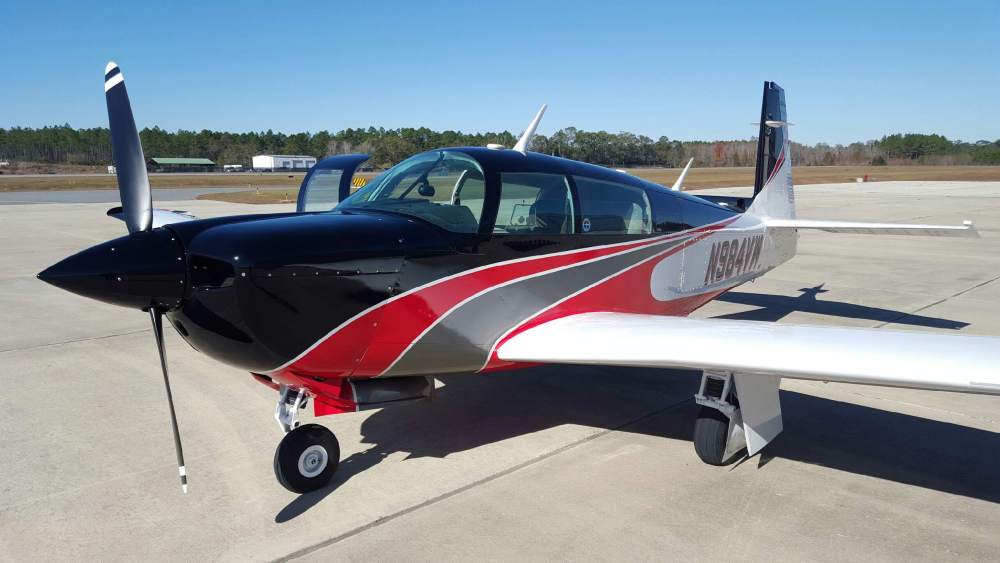

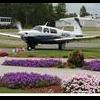
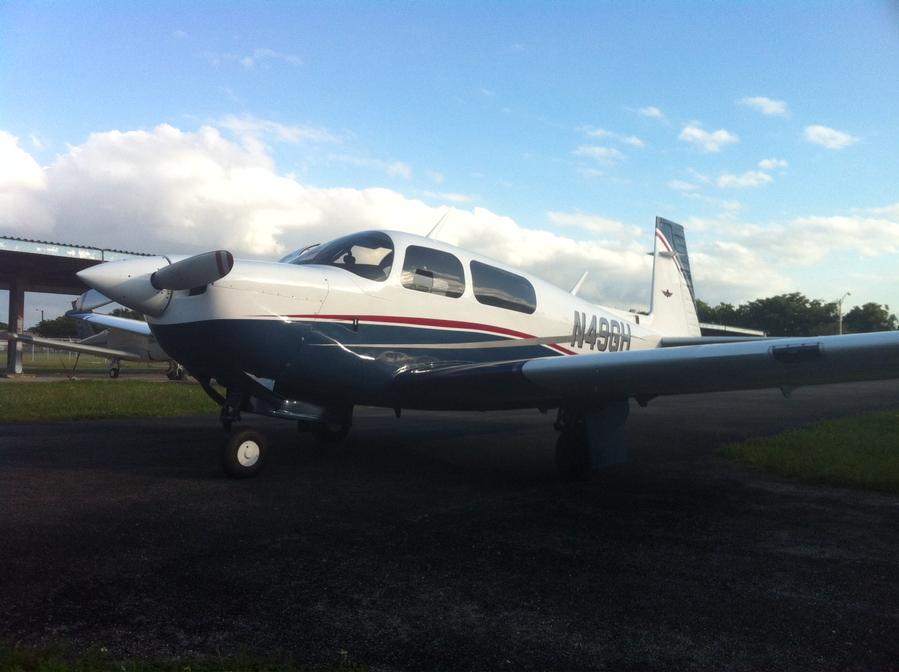




.thumb.png.7c67574d7b28f67b0b4a17760919b1ac.png)





